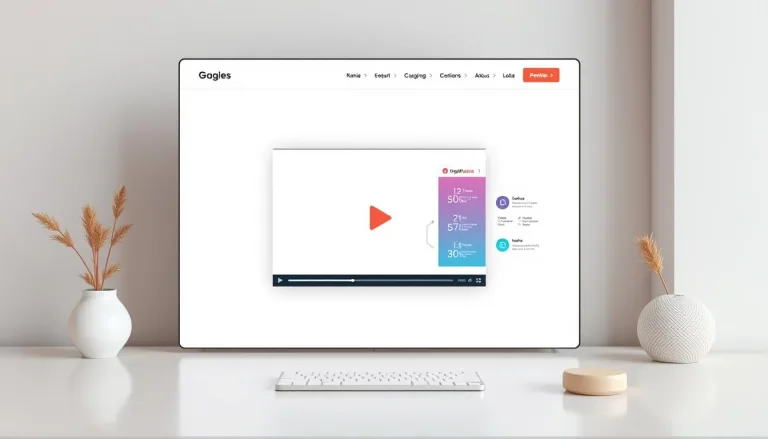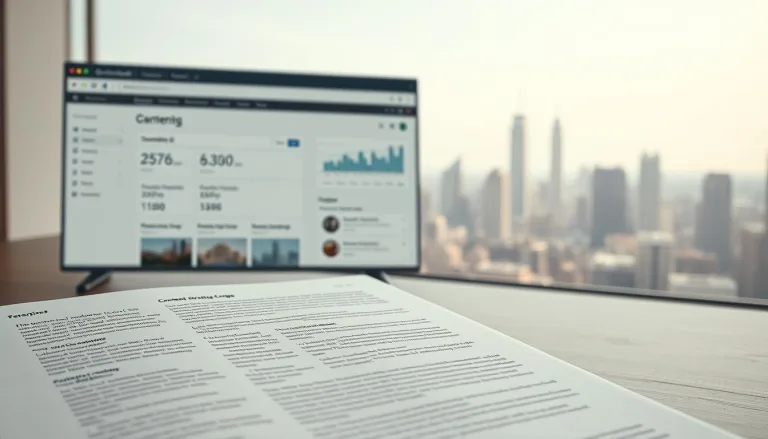Internal Linking Strategies for Web Pages
Digital marketers see internal linking as a key way to boost website performance. It’s all about placing links wisely to make sites easier to navigate and more visible to search engines. Good SEO writing means knowing how these links work within a site.
Internal links connect pages on the same site, serving many important roles. They help visitors find related content, show the site’s structure, and tell search engines what’s important. Experts in writing for websites use these links to make sites easier to use and more effective.
Using smart internal linking can really help a site rank better in searches. These links help search engines see how content is connected, share authority, and crawl the site better. Marketers see internal links as key for clear communication and organizing content.
Website managers need to be careful and strategic with internal linking. Each link is a chance to improve user experience, add context, and strengthen the site’s content structure. Getting these connections right turns simple web pages into rich, connected networks of information.
Understanding Internal Links and Their Importance
Internal links are key to a good content marketing plan. They link different pages on a site, making it easy to find what you need. This helps both users and search engines.
Websites use internal links to show their structure clearly. Search engines look at these links to see how pages are related. They also figure out which content is most important.
Types of Internal Links
- Navigational Links: Found in menus and site navigation
- Contextual Links: Embedded within page content
- Footer Links: Located at the bottom of web pages
- Sidebar Links: Placed in the side columns of a website
Benefits of Strategic Internal Linking
A smart internal linking plan has many benefits:
- It makes the site’s structure better
- It makes the site easier to use
- It spreads out page authority
- It helps search engines find and index content quicker
Impact on Search Engine Crawling
Internal links help search engine crawlers find their way around a site. They make it easier for crawlers to understand and map out the content. This can greatly improve a site’s visibility and ranking.
Website Content Creation: Building a Strong Foundation

Digital content creation is key to a successful website. It needs careful planning and knowing your audience well. Websites that do well in content creation make it easy for users and search engines to find their way.
To build a strong content foundation, follow these steps:
- Identify core topics and themes relevant to your brand
- Develop a clear content hierarchy
- Create high-quality, informative content that answers user questions
- Make cornerstone content that holds your website’s information together
Creating digital content is more than just writing. It’s about a whole approach that looks at:
| Content Element | Strategic Importance |
|---|---|
| User Intent | Aligning content with audience search needs |
| Content Depth | Providing detailed, authoritative information |
| Internal Linking | Creating natural connections between related content |
Good website content should lead users on a clear information path. By focusing on clarity, relevance, and structure, businesses can make content that draws and keeps people’s interest.
Creating an Effective Internal Linking Structure
Building a strong internal linking strategy is key for a website’s success. Search engines need clear paths to index your content well. A good internal linking structure spreads out page authority and makes navigation easier for users.
Creating a smart SEO content strategy involves several important parts. These parts work together to boost your site’s performance:
- Prioritize important pages by creating strategic link connections
- Establish clear content hierarchies
- Ensure intuitive navigation paths
- Create meaningful connections between related content
Homepage Link Distribution
The homepage is the main hub of your website. Smart link distribution from here can greatly improve your SEO. Choose which pages get main links from the homepage to maximize link value and guide users to the best content.
Category and Tag Organization
Good website content development needs organized categories and tags. Organize content into clear, meaningful categories that help both users and search engines understand your site’s layout. This makes navigation easier and improves site crawlability.
Content Hierarchy Planning
Creating a strategic content hierarchy is essential. Build a structure where top-level pages link to more detailed content. This ensures important pages get the right link authority and keeps your site organized.
Optimizing Anchor Text for Better Results
Anchor text is key in SEO and website writing. It tells search engines about the linked content’s context and relevance. Making good anchor text means finding a balance between being clear, user-friendly, and SEO-friendly.
Good anchor text optimization follows a few main rules:
- Use descriptive and natural language that provides context
- Avoid excessive keyword stuffing
- Create diverse and meaningful link text
- Ensure relevance to the destination page
When planning your internal links, think about these anchor text types:
| Anchor Text Type | Description | SEO Impact |
|---|---|---|
| Exact Match | Uses precise target keywords | High specificity, possible over-optimization risk |
| Partial Match | Includes partial keyword variations | Balanced approach, more natural |
| Generic | Uses broad phrases like “click here” | Low keyword relevance, minimal SEO value |
Search engines like websites with smart anchor text use. The aim is to make a natural link profile. This helps users navigate and shows the content’s importance and relationship.
Link Value Distribution and Authority Flow
Internal linking is key for website optimization and search engine performance. It boosts SEO by spreading page authority across the site.
Knowing how link value moves through a site helps writers improve SEO. Each link shares some authority, making a network that search engines use to see the site’s structure.
Understanding PageRank Distribution
PageRank follows a simple rule: link value goes down with each link on a page. So, websites need smart internal linking to keep link equity high.
- High-authority pages pass more value to linked pages
- Pages with fewer outgoing links receive more link equity
- Topically relevant links carry more SEO weight
Strategic Link Placement
Good link placement is about both user experience and SEO. Writers should link related pages meaningfully.
| Link Placement Strategy | SEO Impact |
|---|---|
| Context-Rich Anchor Text | High Relevance |
| Links Within Main Content | Maximum Authority Transfer |
| Hierarchical Site Structure | Improved Crawlability |
Managing Link Equity
Managing link equity means balancing links and where they’re placed. Nofollow attributes help control link value. This ensures key pages get the best ranking chance.
Technical Aspects of Internal Linking
Creating a strong website SEO content strategy means paying close attention to technical details. Page depth is key for search engines to crawl and index pages. Complex sites can make it hard for search engines to find what they need.

- Minimizing page depth to improve crawlability
- Implementing strategic breadcrumb navigation
- Creating detailed XML sitemaps
- Maintaining a simple site architecture
Search engines like websites with clean and intuitive internal linking structures. Making it easier for users to find important pages boosts both search engine rankings and user satisfaction.
| Technical Element | SEO Impact | Optimization Strategy |
|---|---|---|
| Page Depth | High crawl difficulty | Reduce clicks from homepage |
| Breadcrumb Navigation | Improved user orientation | Implement clear hierarchical links |
| XML Sitemaps | Enhanced indexing | Regular updates and submission |
Using advanced techniques like rel=”canonical” tags can help manage duplicate content. This supports a detailed internal linking strategy. By focusing on these technical points, websites become more accessible and friendly to search engines.
Common Internal Linking Mistakes to Avoid
Creating great websites means paying close attention to how links are used. Many experts run into problems that hurt their site’s performance and marketing efforts.
Working with internal links needs careful planning and smart thinking. Bad link management can make a site hard to use and lower its ranking on search engines.
Broken Link Management
Broken links are a big problem for websites. Studies show that 42.5% of sites have broken internal links. This can upset users and hurt a site’s SEO.
- Do regular link checks with special tools
- Fix or remove links that don’t work
- Use automated tools to check links
Avoiding Over-Optimization
A good content marketing plan balances internal links well. Too many links can get you in trouble with search engines and make your content seem less trustworthy.
- Use different and natural link text
- Don’t put too many links on one page
- Focus on making your site easy to use, not just linking a lot
Navigation Structure Issues
Too complicated navigation can confuse both users and search engines. Simple, easy-to-use site structures help users find what they need and stay engaged.
- Make your site’s structure clear and logical
- Keep your menus simple
- Make sure navigation is the same everywhere on your site
By knowing and fixing these common mistakes, website owners can improve their online presence. They can make their sites more effective and easier for users to navigate.
Conclusion
Website Content Creation is more than just writing. It’s about making digital content work together like a team. Internal linking is key to helping search engines understand and rank your content well.
Digital content creation needs careful thought about where and how to link. Good internal linking builds a strong network of information. It helps users find related topics easily and shows search engines what’s important.
Creating a solid internal linking strategy takes time and effort. Web publishers need to check their site’s structure, use the right anchor text, and make sure navigation is smooth. By seeing internal links as important connections, websites can boost their SEO and user experience.
Mastering internal linking is a continuous process. Website owners should check their links often, fix broken ones, and spread link value evenly. With dedication and planning, internal linking can make your online content more visible and engaging.







